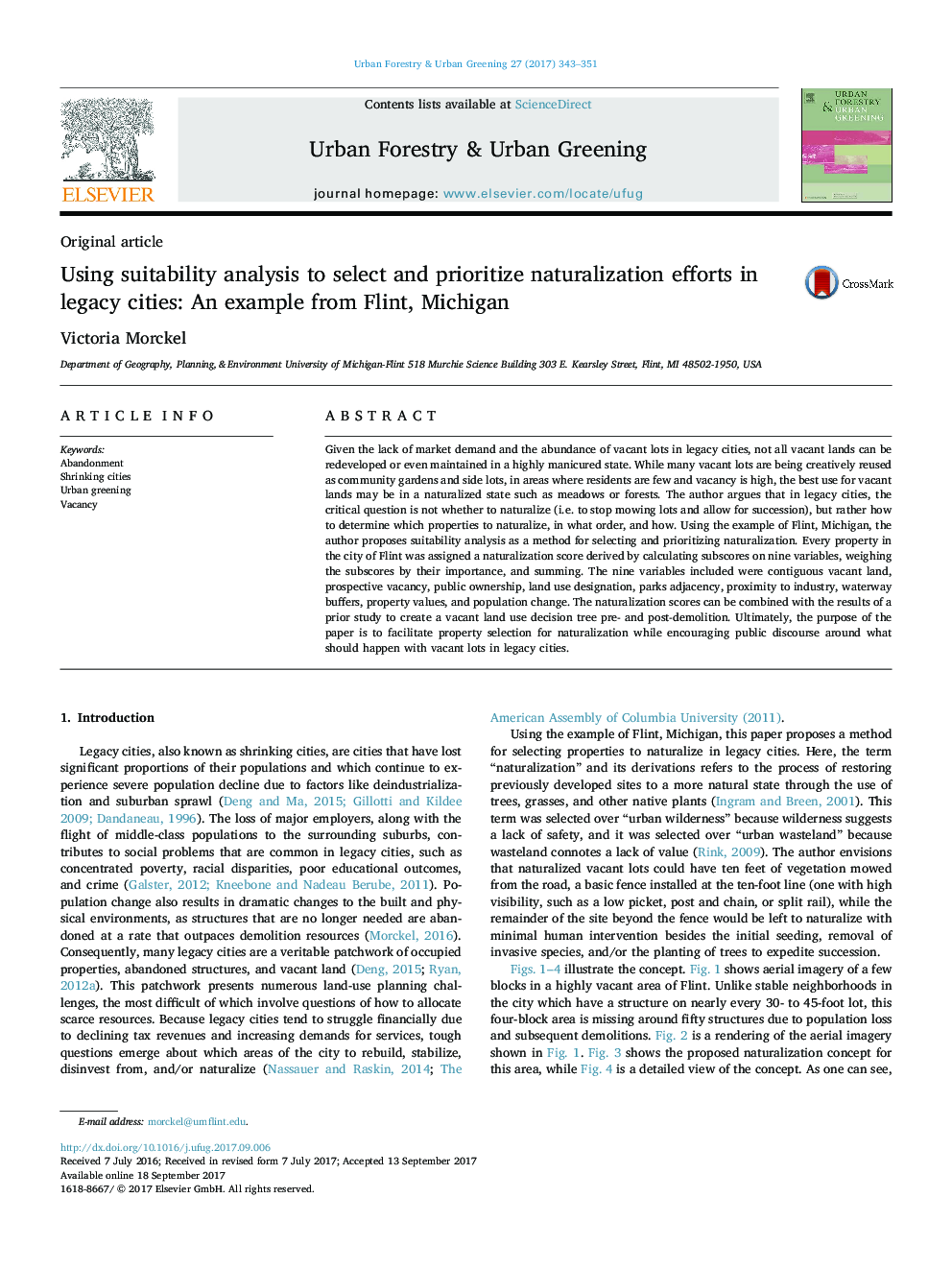| Article ID | Journal | Published Year | Pages | File Type |
|---|---|---|---|---|
| 6461780 | Urban Forestry & Urban Greening | 2017 | 9 Pages |
Given the lack of market demand and the abundance of vacant lots in legacy cities, not all vacant lands can be redeveloped or even maintained in a highly manicured state. While many vacant lots are being creatively reused as community gardens and side lots, in areas where residents are few and vacancy is high, the best use for vacant lands may be in a naturalized state such as meadows or forests. The author argues that in legacy cities, the critical question is not whether to naturalize (i.e. to stop mowing lots and allow for succession), but rather how to determine which properties to naturalize, in what order, and how. Using the example of Flint, Michigan, the author proposes suitability analysis as a method for selecting and prioritizing naturalization. Every property in the city of Flint was assigned a naturalization score derived by calculating subscores on nine variables, weighing the subscores by their importance, and summing. The nine variables included were contiguous vacant land, prospective vacancy, public ownership, land use designation, parks adjacency, proximity to industry, waterway buffers, property values, and population change. The naturalization scores can be combined with the results of a prior study to create a vacant land use decision tree pre- and post-demolition. Ultimately, the purpose of the paper is to facilitate property selection for naturalization while encouraging public discourse around what should happen with vacant lots in legacy cities.
